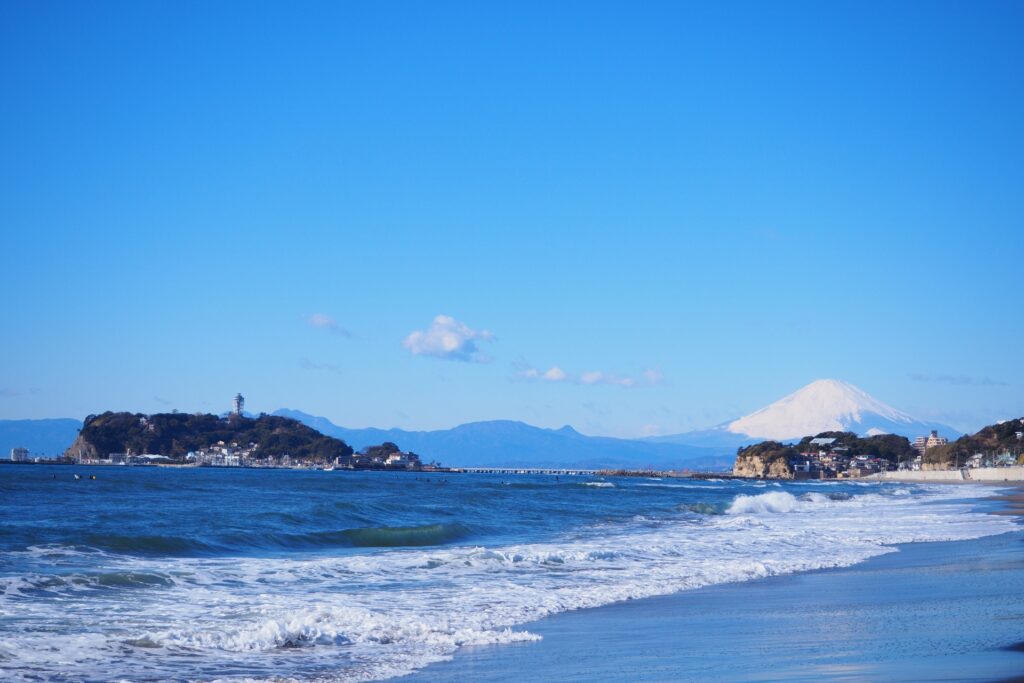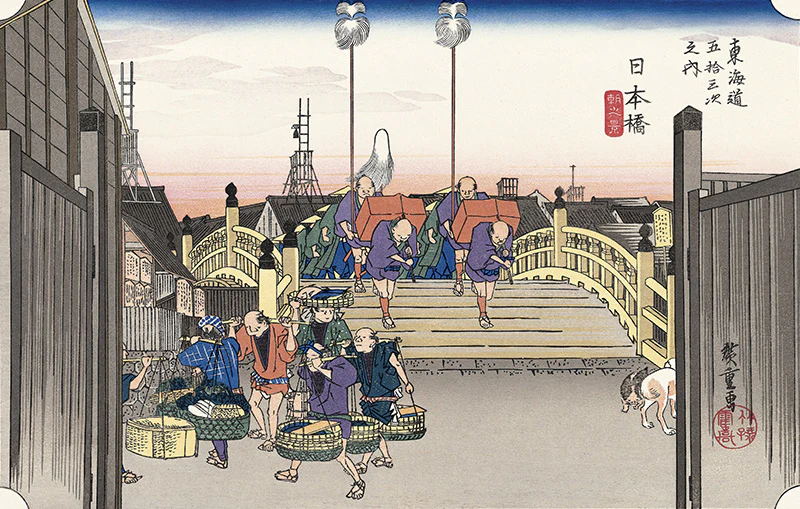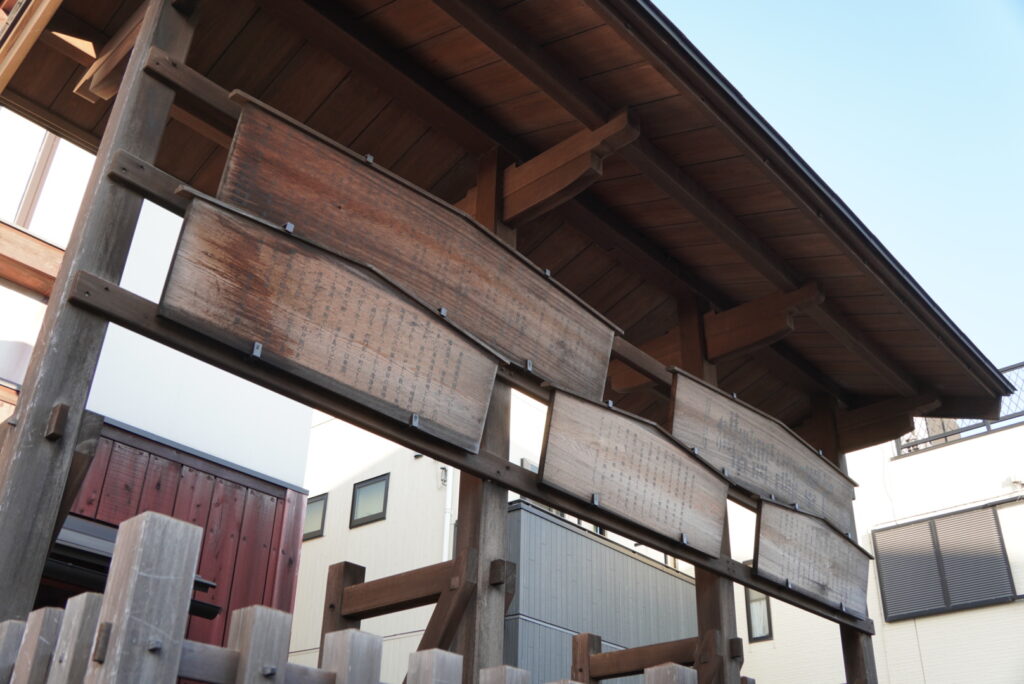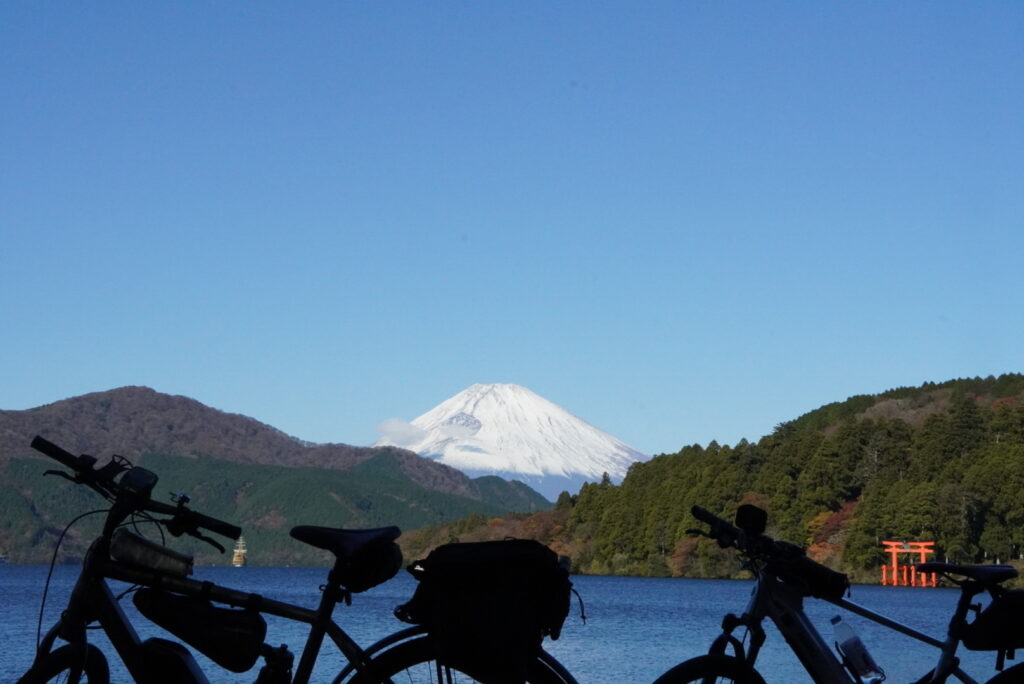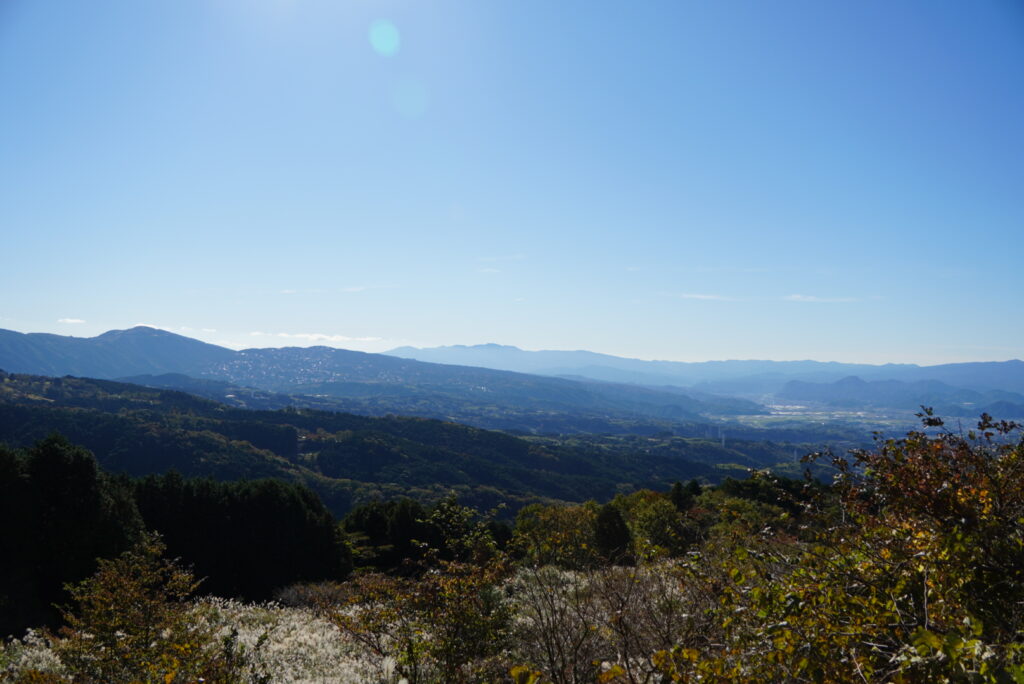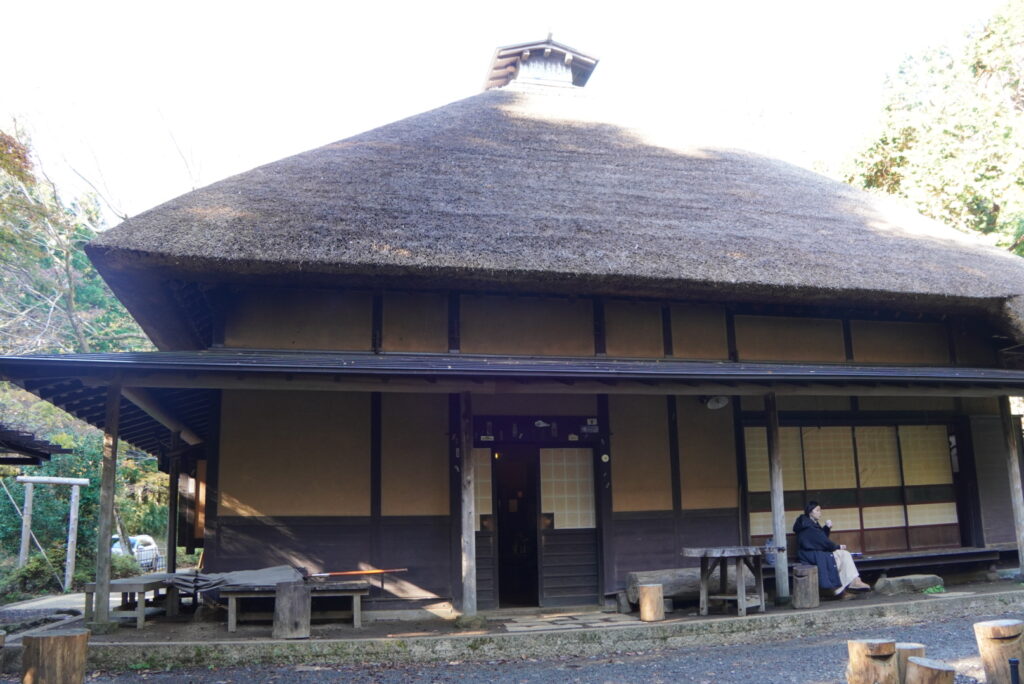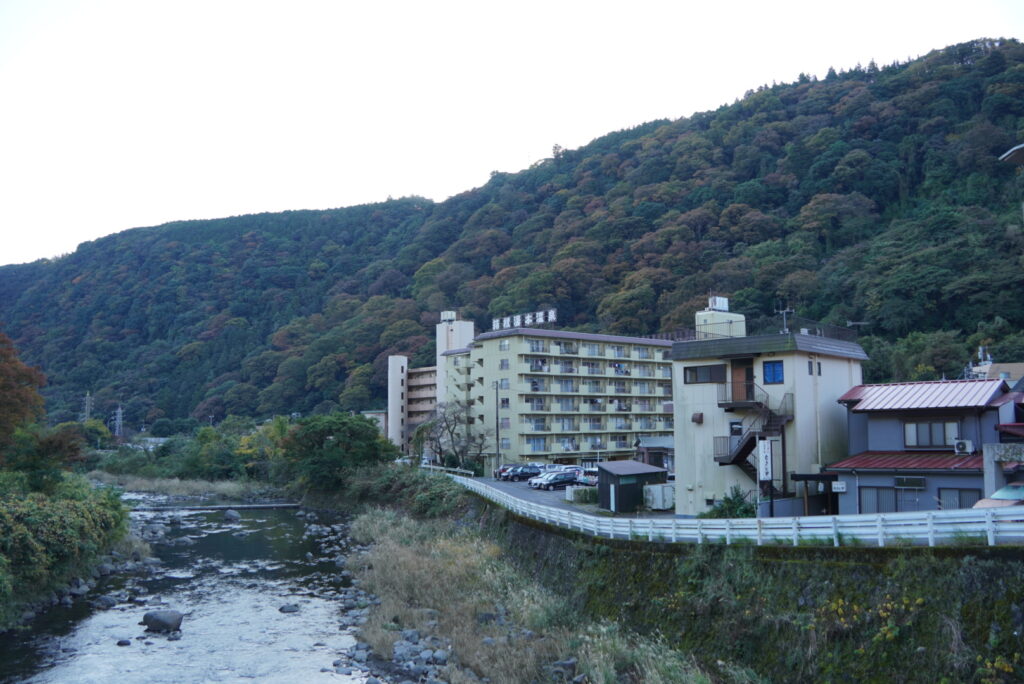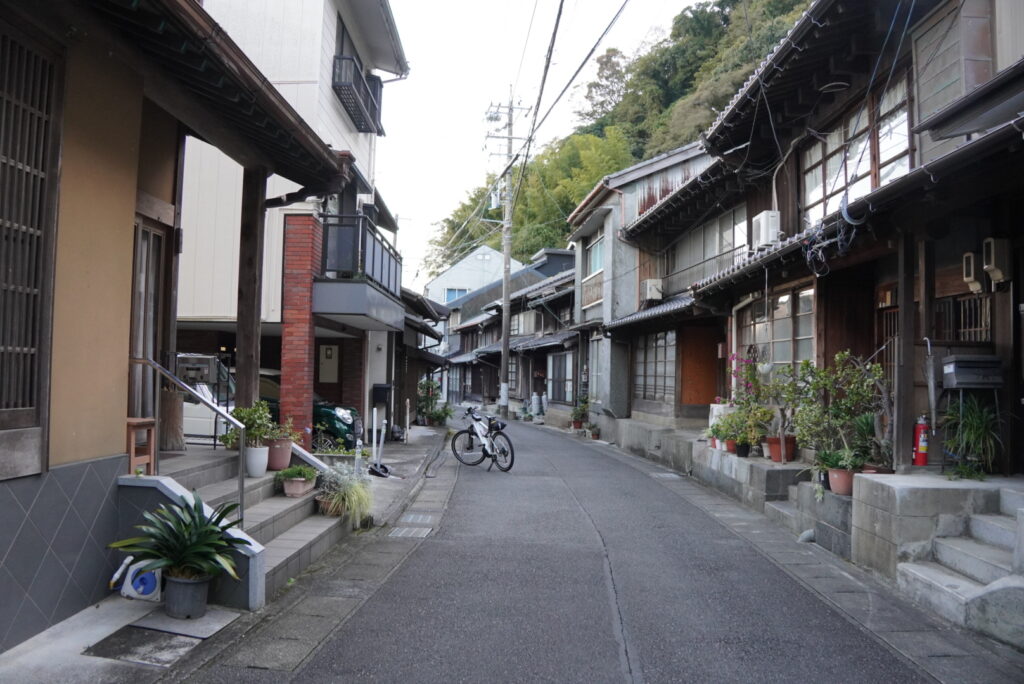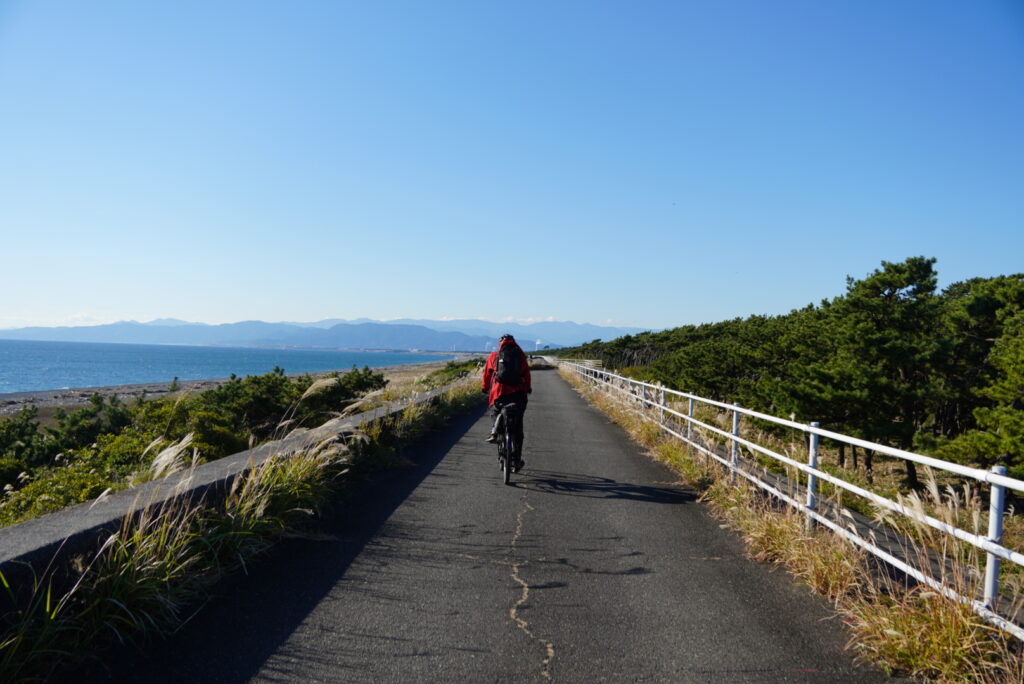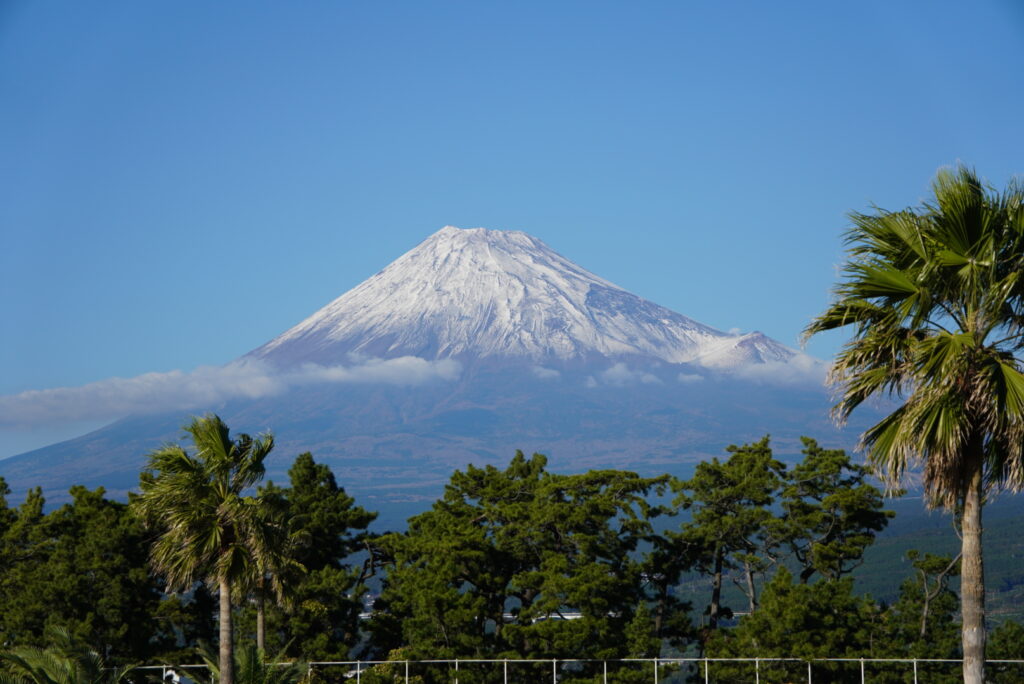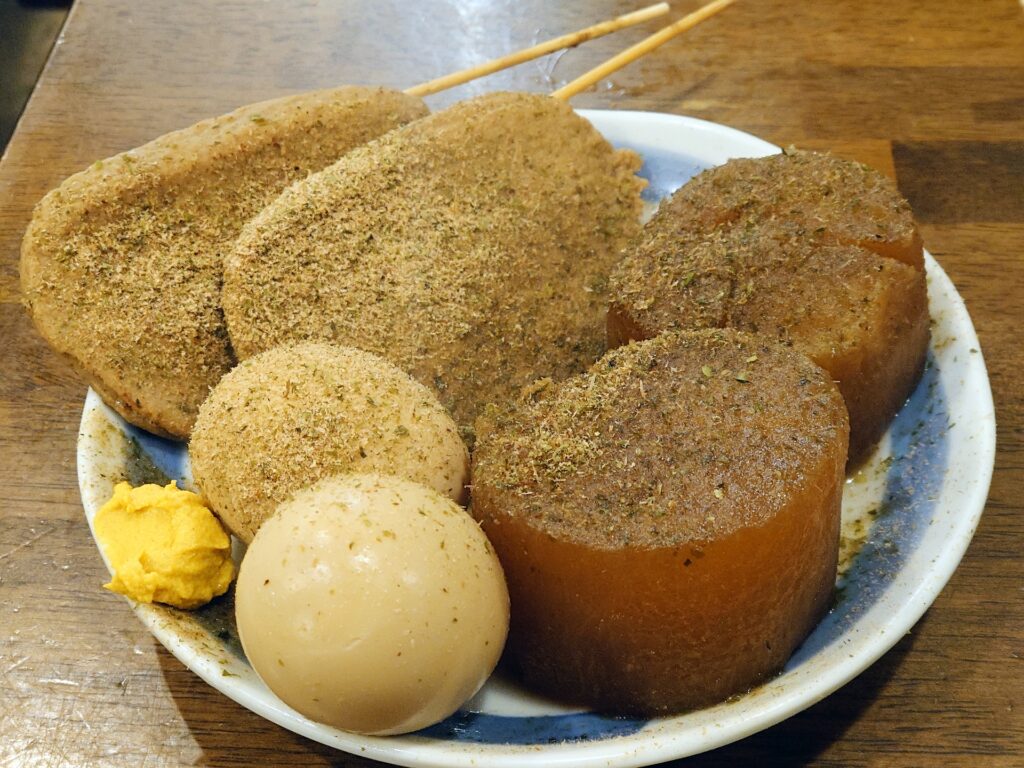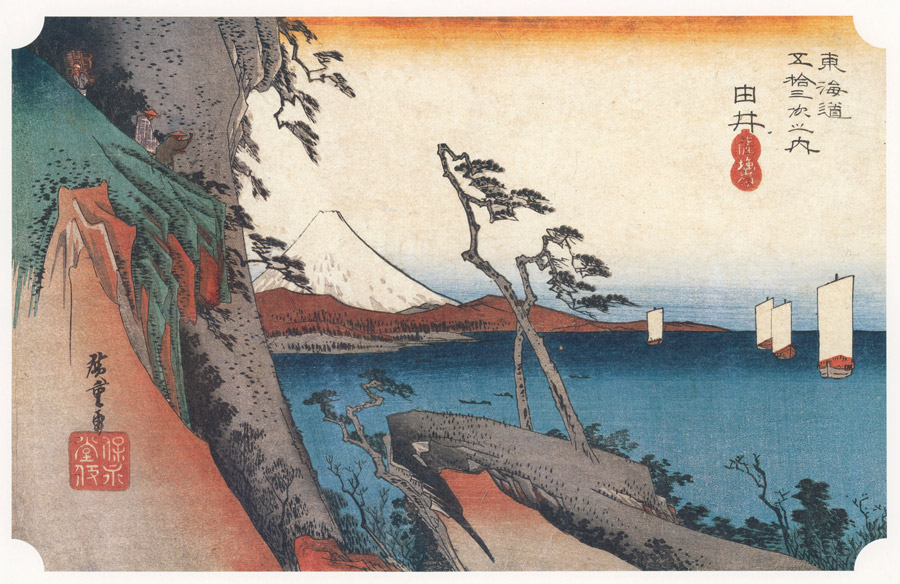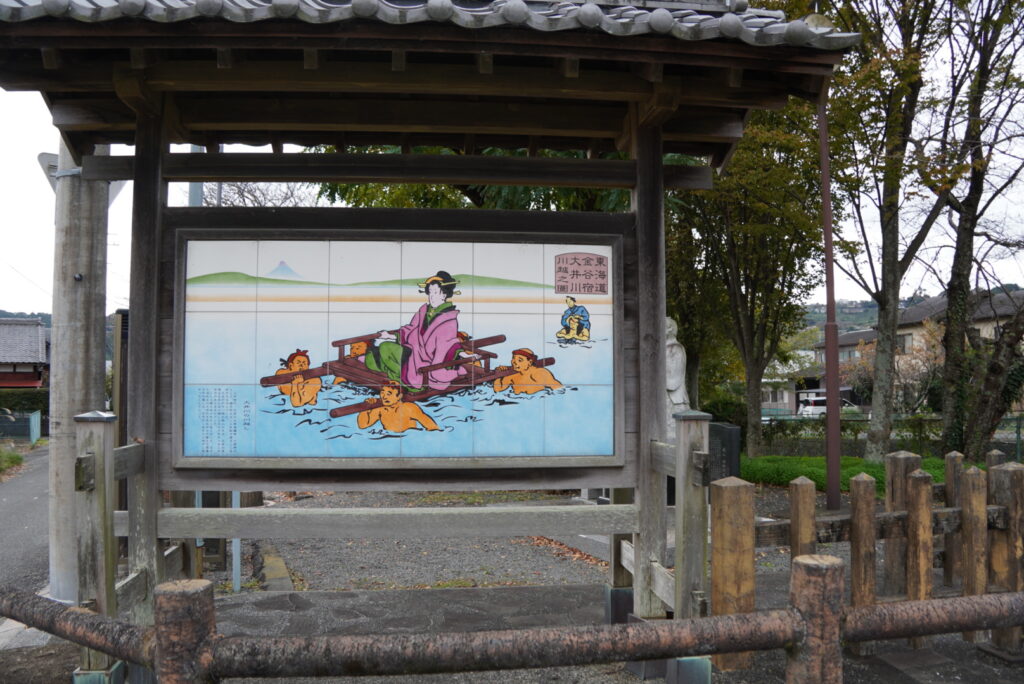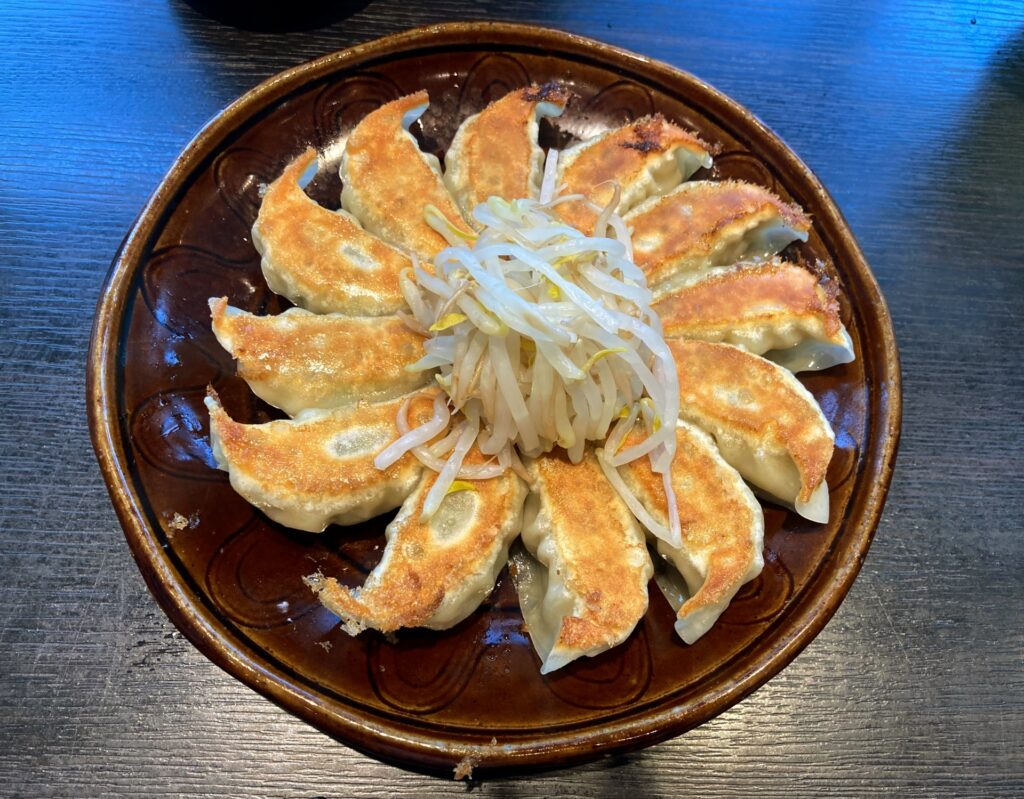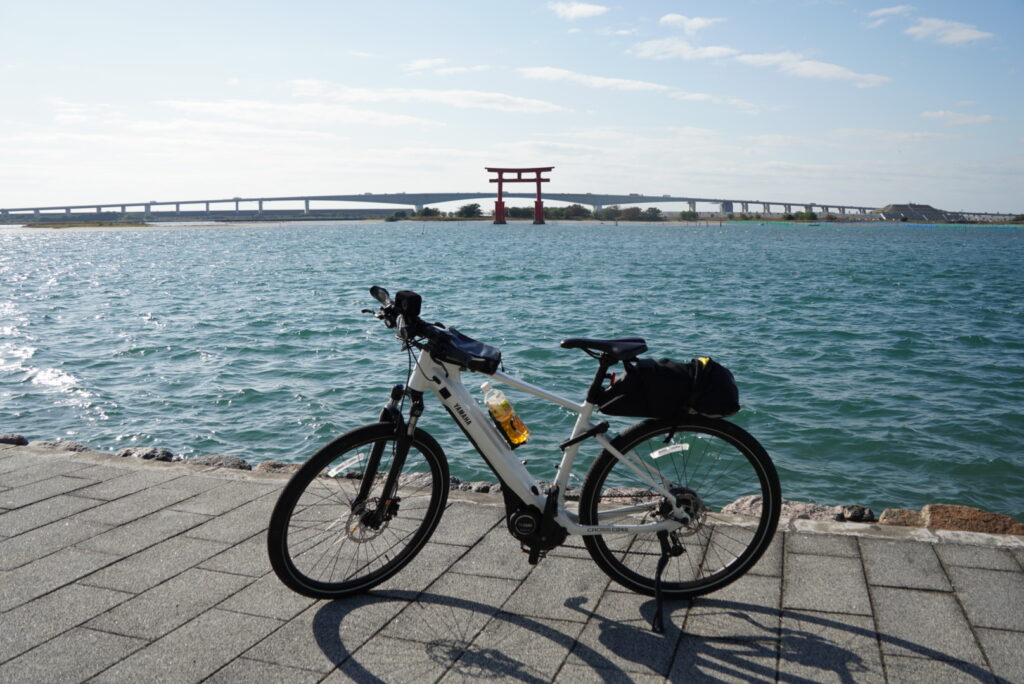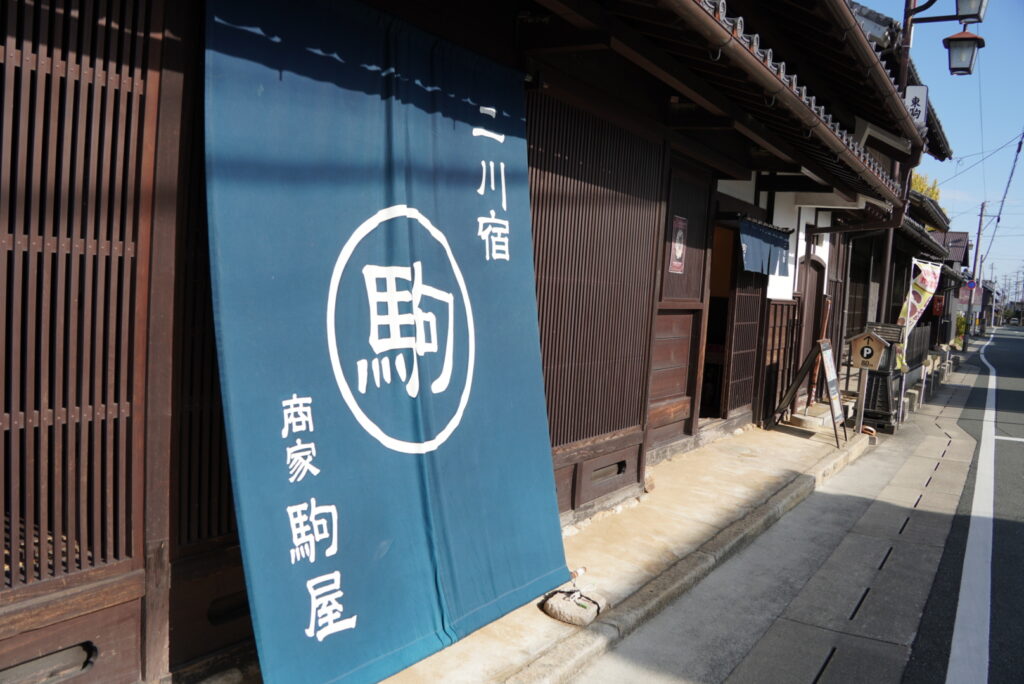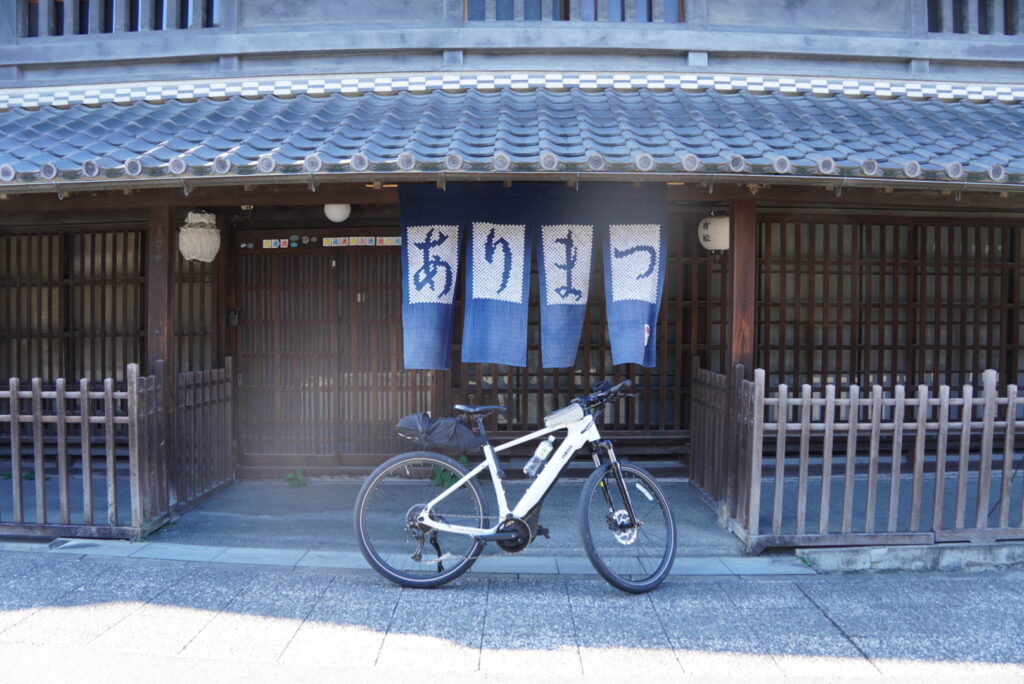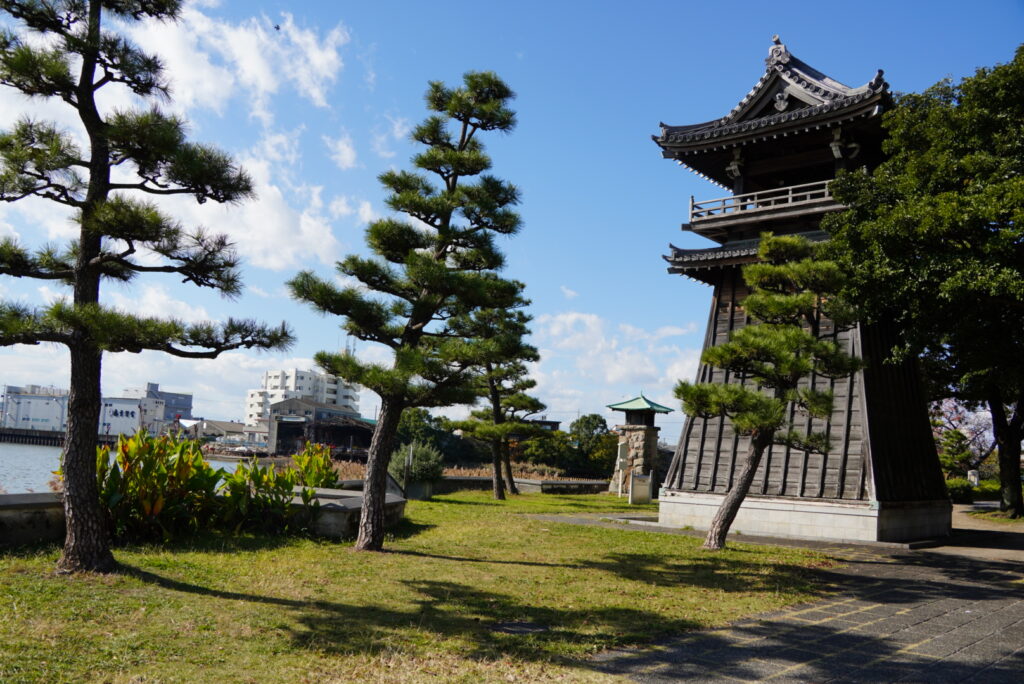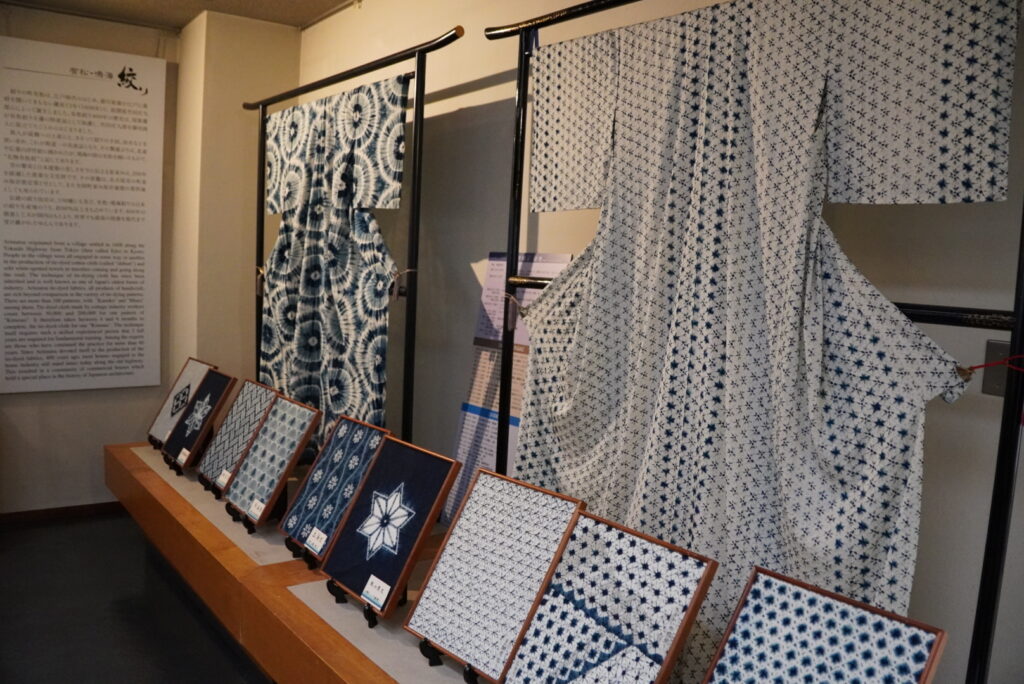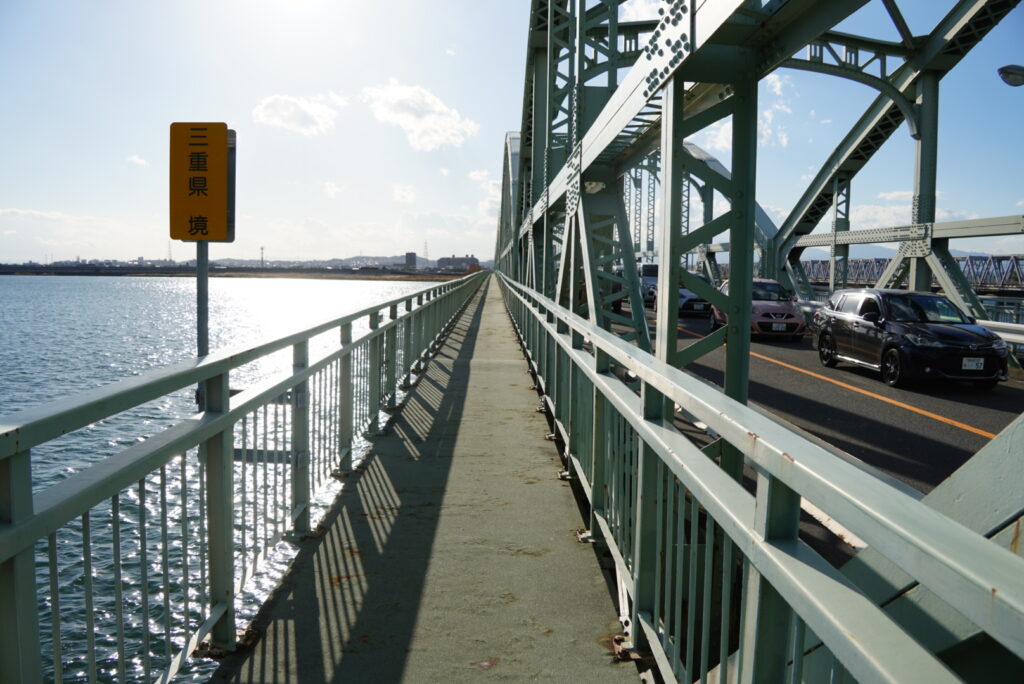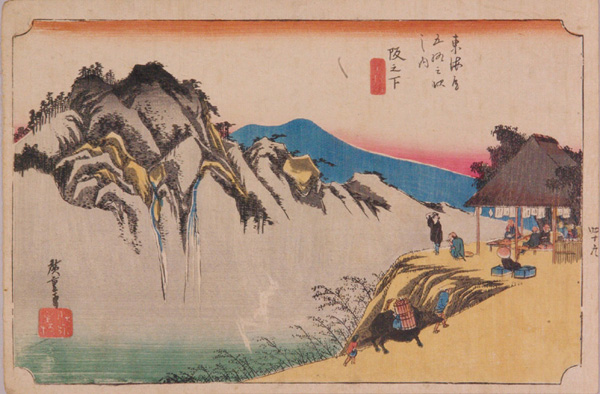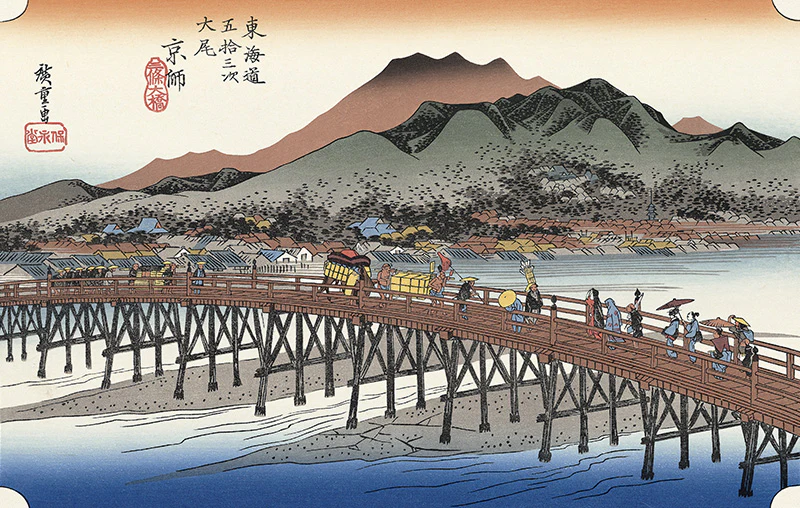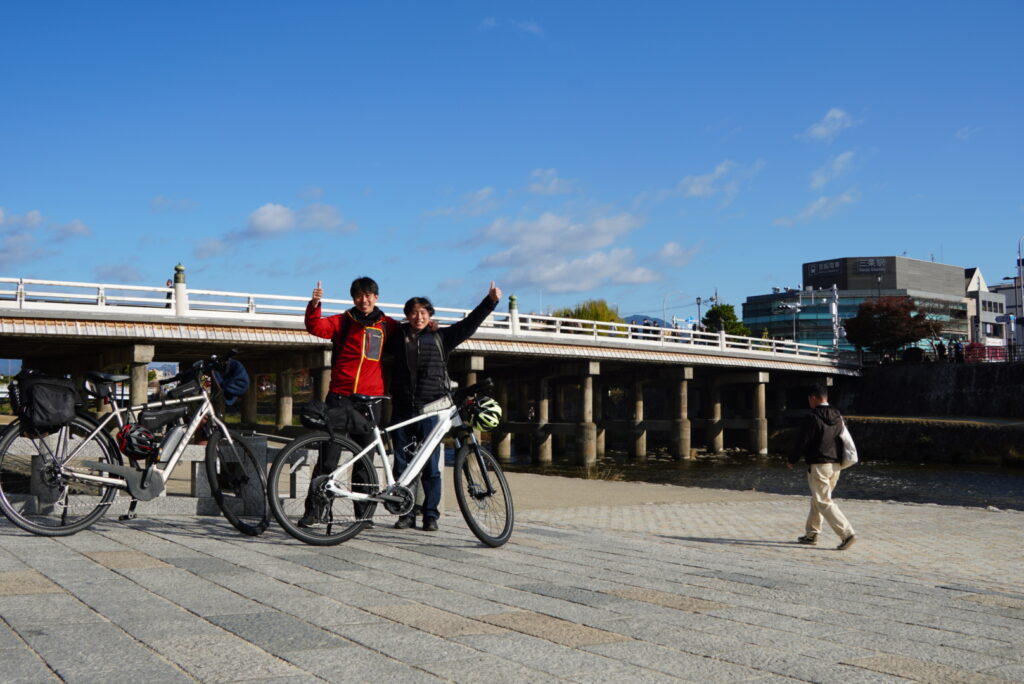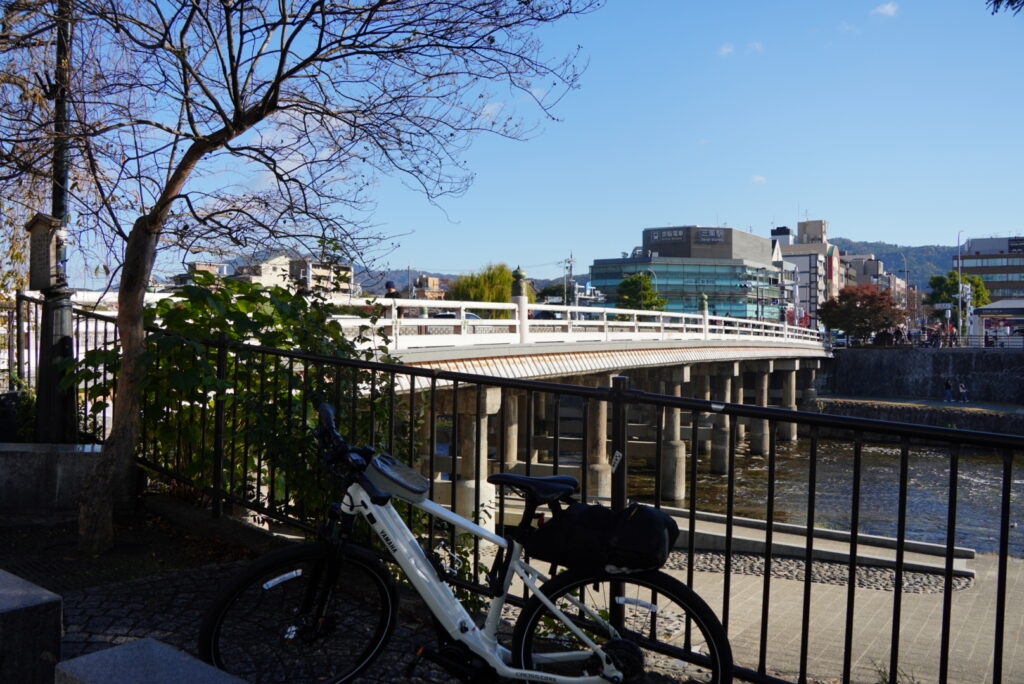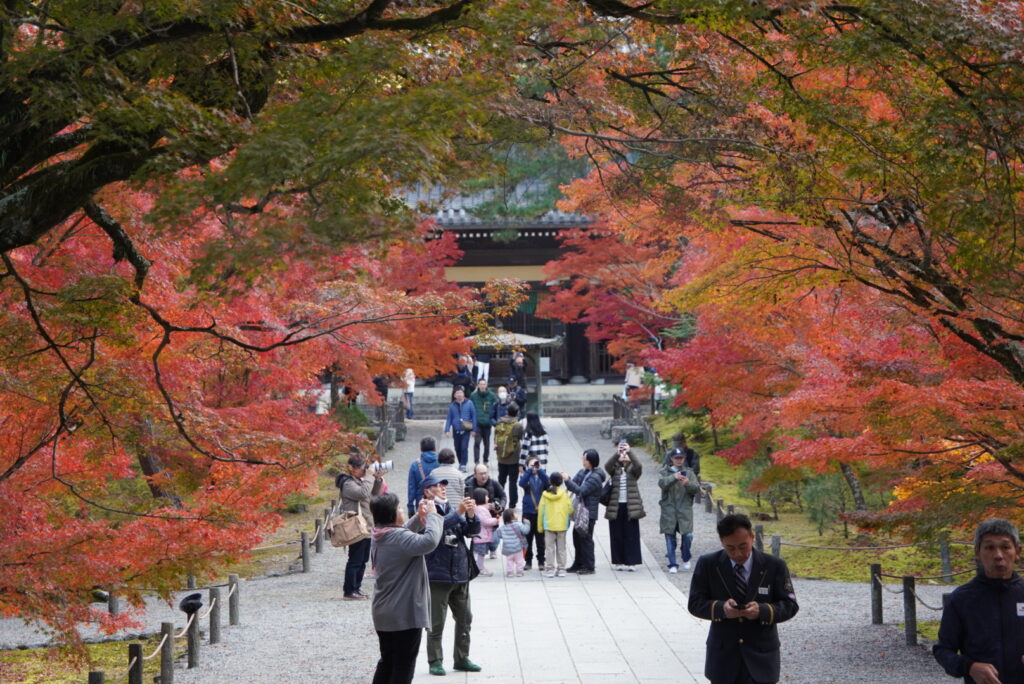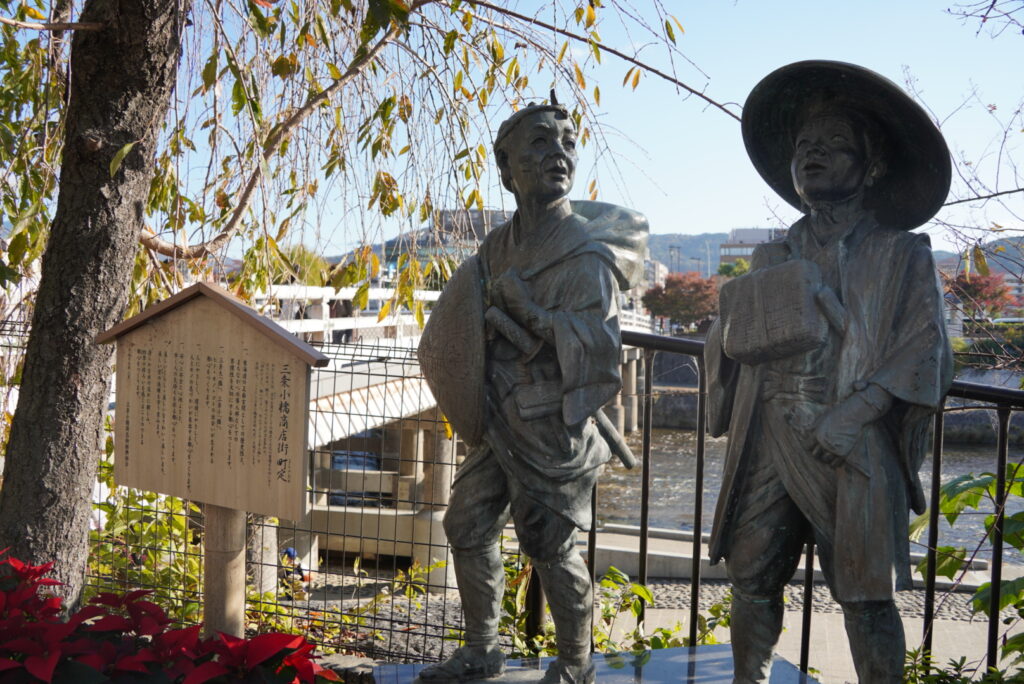Day 1 Nihonbashi-Fujisawa(Enoshima) 65kms/ 40miles
Begin your 492-km adventure to Kyoto at Nihonbashi, the historic starting point of Japan's five major roads, where distances are still measured today. As you traverse the Tokaido Highway, immerse yourself in Tokyo's rich history, with numerous historical sites dotting the route. The old highway has transformed into vibrant shopping and residential streets, offering a taste of local life.
After passing Shinagawa, the first post-town, you'll cross the Tama River—a crossing once done on foot, as depicted in classic Ukiyo-e prints. This journey beautifully contrasts past and present. Continuing through Yokohama, you'll reach Fujisawa.
By 3 p.m., arrive at your hotel in Enoshima, a beloved destination since the Samurai era. The island boasts attractions like shrines, parks, an observation tower, caves, and, on clear days, stunning views of Mount Fuji.
Day 2 Fujisawa-Mishima 80kms/50 miles
The highlight of Day 2 is crossing the Hakone Pass (846m), known as the most challenging point on the Tokaido Highway. But don’t worry—our latest e-bikes make the journey smooth and enjoyable.
Before reaching Hakone Pass, the road remains mostly flat, passing through Hiratsuka, Oiso, and Odawara. Along the way, you’ll be treated to stunning views of uniquely shaped mountains, picturesque rows of pine trees, and the scenic coastline.
We’ll take a break at an atmospheric thatched tea house that exudes the charm of a bygone era. From there, we descend to Lake Ashi, a serene spot surrounded by natural beauty. During the Edo period, Hakone was famous for its Sekisho barrier station—a checkpoint that regulated travelers and struck fear in unqualified visitors. Today, we’ll pass through the reconstructed Sekisho and stroll along the historic cedar tree street before continuing on to Mishima.
Our destination for the day is Mishima, locally known as the "City of Water." The town is blessed with spring water that flows directly from Mt. Fuji. Take a relaxing stroll along the charming streams and enjoy the soothing sound of running water. Before the day ends, be sure to savor a local specialty—unagi (freshwater eel).
Day 3 Mishima-Fuchu(Shizuoka)70km/45miles
This is a day to marvel at the various faces of Mt. Fuji. From different angles, Mt. Fuji reveals its unique beauty, enchanting travelers along the Tokaido Highway.
The first view of Mt. Fuji is at Senbon Matsubara in Numazu, renowned for its picturesque scenery. Here, you can admire evergreen pine trees, the snow-capped peak of Mt. Fuji, and stunning sunsets over Suruga Bay. The coastal road features a dedicated cycling path, allowing for a comfortable ride while enjoying the magnificent views.
As you head west along the Tokaido Highway, Mt. Fuji is usually visible on your right. However, the road near Yoshiwara takes a sharp curve, creating a rare view of "Left-Fuji." This unique perspective, immortalized in ukiyo-e art, is a popular spot for travelers.
The highlight of the day is the Satta Pass, located between Kanbara and Yui. From this vantage point, you can enjoy the majestic Mt. Fuji rising above the deep blue Suruga Bay. The area also offers a fascinating view where the Tokaido Main Line, National Route 1, and Tomei Expressway converge at the foot of the pass, making it an iconic location for photography.
After passing through Okitsu and Ejiri, we will arrive in Fuchu (modern-day Shizuoka City). End the day with a lively evening in Shizuoka’s largest city, where you can explore local cuisine and vibrant nightlife.
Day 4 Shizuoka-Kakegawa 60km/35miles
Today, you’ll follow the same paths as travelers of the past, savoring the same foods and experiencing journeys steeped in history. Along the way, you’ll find many old-established shops from the Edo period, where we’ll stop to rest and explore.
Leaving Fuchu, we’ll head towards the Abe River. Before crossing, we’ll visit Ishibeya, a shop founded in 1804, where you can enjoy fresh Abegawa mochi (traditional rice cakes) made with time-honored methods. Nearby, in Maruko, is Chojiya, a restaurant established in 1596. Its exterior remains unchanged since the Edo period, as depicted in ukiyo-e prints.
At Utsunoya Pass, you’ll witness the history of technological and transportation evolution. This area features four tunnels from different eras, including a Meiji-era red brick tunnel, which is registered as a tangible cultural property.
Later, we’ll visit the world’s longest wooden bridge, the Horai Bridge (897m), located in Shimada. From there, we’ll tackle the Nakayama Pass, surrounded by stunning tea fields. At the summit, a tea house with over 300 years of history still stands, offering Kosodate Ame, a local candy specialty since the Edo period.
Your accommodation tonight is near Kakegawa Castle. If you still have energy, it’s highly recommended to visit this historic site and explore its beautiful grounds.
Day 5 Kakegawa-Yoshida(Toyohashi) 75km/45miles
Departing from Kakegawa, our first stop is Fukuroi, a post town known as the midpoint of the Tokaido Highway. The road to Fukuroi takes you through a peaceful row of pine trees, offering a tranquil start to the day.
Next, we pass through Hamamatsu, one of the larger cities along the Tokaido Highway. After enjoying the liveliness of Hamamatsu, we reach the picturesque Lake Hamana. From Bentenjima Beach Park, you can admire the iconic floating Shinto Torii gate, reminiscent of the famous one in Hiroshima.
In the Lake Hamanako area, we’ll visit the historic Arai Sekisho (Checkpoint). Originally built in 1600, the checkpoint was relocated twice before its current structure was reconstructed in 1858. It is the only existing checkpoint building in Japan and has been designated as a special national historic site.
Continuing the journey, we pass through Shirasuka, where you can enjoy breathtaking sea views. From there, the route takes us through peaceful fields of cabbage and rice, leading to Yoshida (Toyohashi), where we will stay tonight.
If time permits, a visit to the nearby Toyokawa Inari Shrine is highly recommended. As one of Japan's three most famous Inari shrines, it is home to more than a thousand stone fox statues, creating a mystical and unforgettable experience.
Day 6 Yoshida(Toyohashi)-Miya(Nagoya) 70km/45miles
Today's destination is the major city of Nagoya.
There are around 300 large pine trees lined up for 600m from Goyu to Akasaka post towns still intact from the olden days. There are many rows of pine trees as you travel along the Tokaido Highway, but this is the best pine tree street on Tokaido Highway.
We will stop at Ohashiya to experience how people used to rest in the accommodation. Ohashiya was the last inn on the Tokaido Highway to operate in its original Edo-period building, but closed in 2015 to be reopened as a museum.…
In the town of Okazaki, we will follow the 27 turns that were built for the town's defense. The area is also famous for miso (fermented soybean paste), and we will visit the Hatcho miso factory. Hatcho Miso is a strong and dark red Miso made continuously in Okazaki for over 800 years. Japan produces various Miso types, but Hatcho Miso was the only supplier of Miso to the royal family from 1892 until 1954. ・
Before arriving at Nagoya, we will visit Arimatsu. Arimatsu flourished as a production center for tie-dyeing. The beautiful townscape and traditional handicrafts can be discovered in this area.
Day 7 Kuwana-Minakuchi 80km/50miles
In the past, travelers on the Tokaido Highway would journey by boat from Miya to Kuwana. While we travel by train in today’s world, we’ll start our day at the park where boats used to arrive during those times, connecting to the history of the route.
The Tokaido Highway in Yokkaichi has transformed into a roofed shopping street. Although the historical atmosphere has faded, it remains the bustling center of the town, showcasing the evolution of this once-traditional route.
The highlight of the day is Sekijuku. Among the 53 post stations along the Tokaido Highway, Sekijuku is the best preserved. While Tsumago-juku and Magome-juku on the Nakasendo Highway in Nagano are widely known, Sekijuku stands as one of Mie Prefecture’s hidden treasures. Its original Edo-period buildings allow visitors to step back in time and experience the journey as travelers did hundreds of years ago.
The Suzuka Pass, the second most challenging section of the Tokaido Highway, is a testament to the route’s difficulty in historical times. After crossing the pass, we’ll arrive in Mizuguchi, where we will stay for the night.
Day 8 Minakuchi-Kyoto 60km/35miles
At last, we reach our ultimate destination: Kyoto. The ride to Kusatsu offers a gentle downhill slope, making for a pleasant and relaxing journey.
Kusatsu was a key junction where the Tokaido and Nakasendo highways branched and merged. This vibrant town also thrived due to its proximity to Yabase Port, a vital hub for Lake Biwa’s ship transportation. Its lively history as a crossroads of travelers and goods is still evident today.
We’ll stop at Kusatsujuku Honjin, a historic rest house once reserved for feudal lords and court nobles. Kusatsujuku Honjin is one of the largest and best-preserved Honjin buildings in Japan, offering a glimpse into the life of high-ranking travelers in the Edo period.
From Kusatsu, we cross the iconic Seta no Karahashi Bridge, renowned as one of Japan’s Three Famous Bridges. Continuing on, we climb and descend Mount Osaka before finally arriving in Kyoto, the city of a thousand years.
The journey along the Tokaido Highway concludes at Sanjo Ohashi Bridge, marking the end of this historic route. While dinner is not included tonight, we highly recommend celebrating the completion of your fantastic trip with a farewell meal at one of your tour leader’s favorite restaurants in Kyoto. It’s the perfect way to toast to the memories made along the way.

